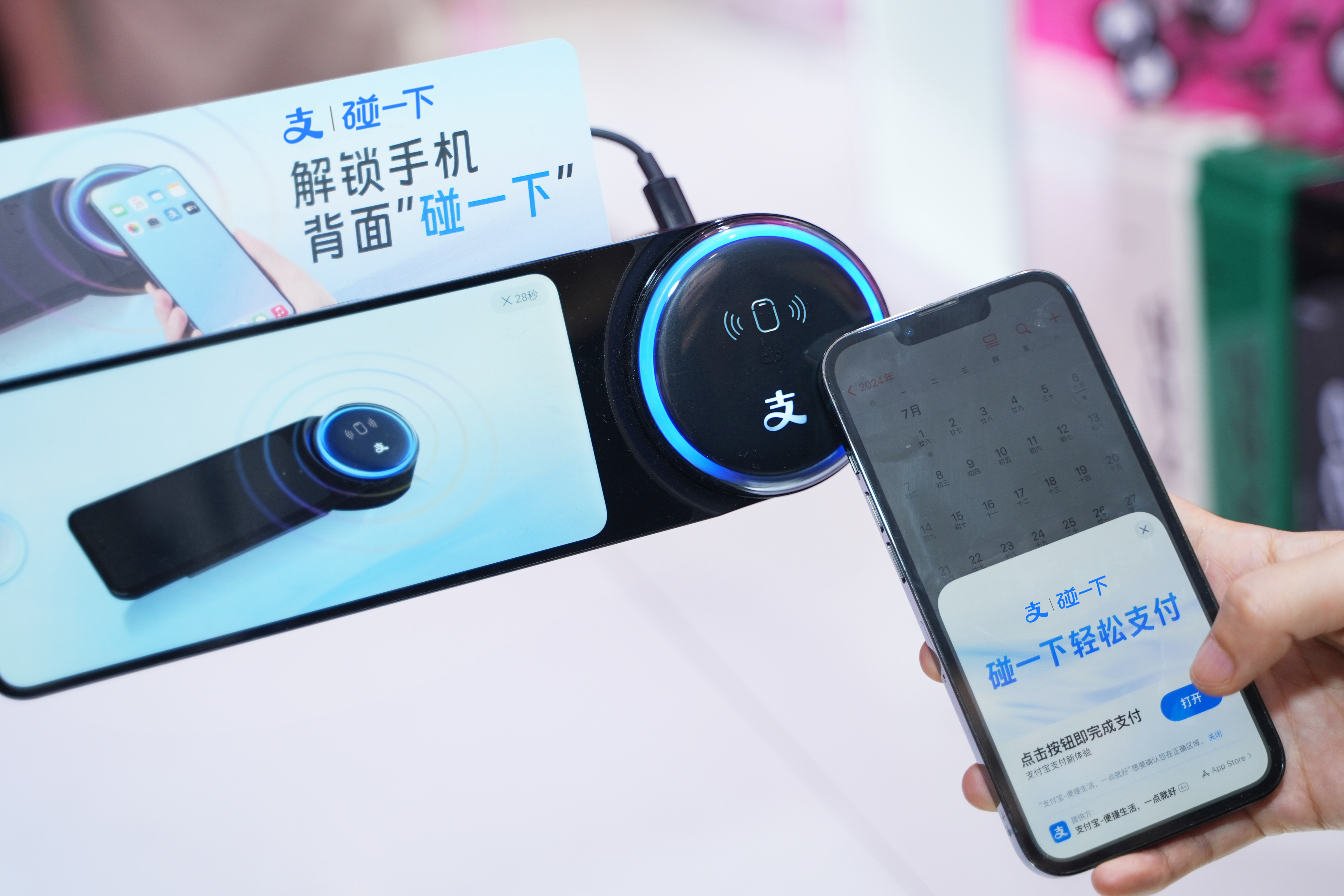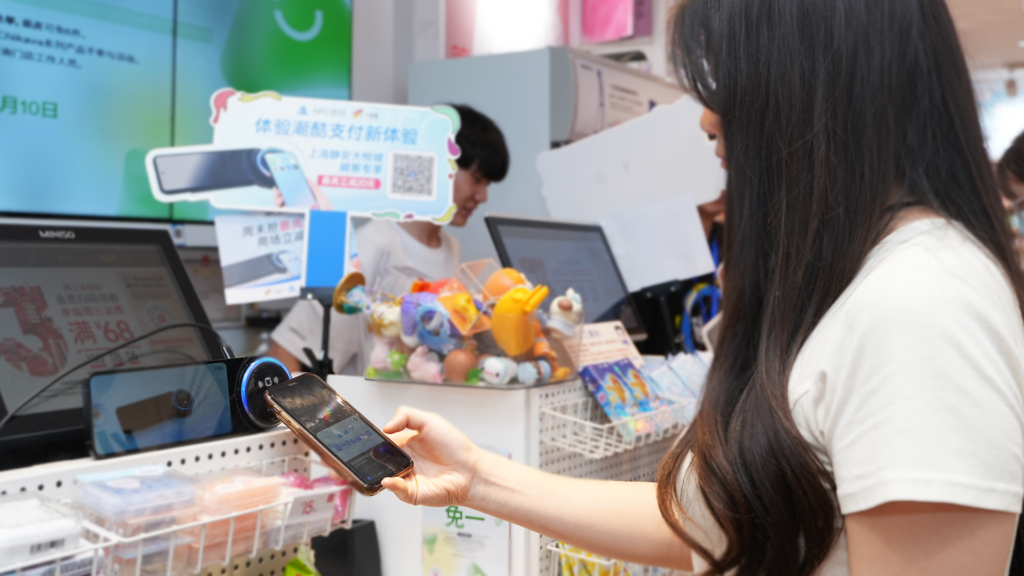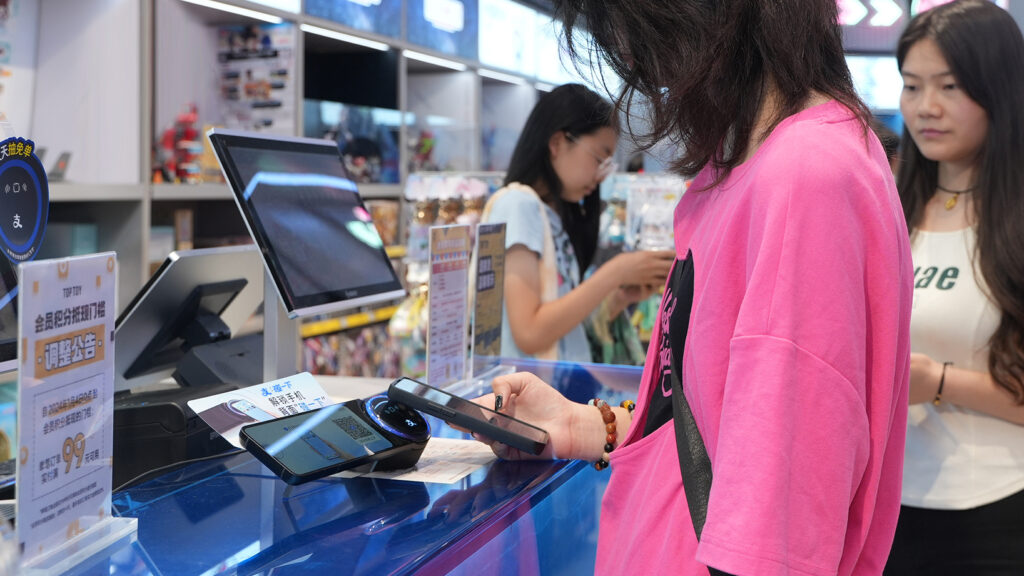AsiaTechDaily – Asia's Leading Tech and Startup Media Platform

Alipay rolls out Tap! to make in-store payment experience simpler for users in China
Alipay is introducing the Tap! function to streamline in-store payments for users in major Chinese cities. According to reports from Shanghai, this new feature is compatible with popular payment methods already used by merchants and supports both Android and Apple mobile phones.

How does it work?
Alipay’s Tap! is accessible for both iPhone and Android users. To use it, users need to enable NFC on their phones, keep the screen unlocked, and simply tap their phone against the merchant’s USB add-on at the cash register to complete the transaction. This method reduces the transaction process by three steps compared to traditional QR code payments.
Alipay’s Tap! is essentially a simpler version of QR code payment, rather than NFC payment. According to local Shanghai media reports, unlike typical NFC payments, that use a ”card emulation” mode to simulate virtual bank cards on smartphones, Alipay’s Tap! operates in a “reader mode”. The smartphone acts as a reader to scan the merchant’s NFC tag, and then wakes up the Alipay app to complete the transaction online. This mode mirrors the familiar process of QR code payments but streamlines the initial steps by replacing scanning with a straightforward tap.
Security mechanisms
Similar to QR code payments, Tap! requires the phone to be unlocked for manual confirmation before completing transactions.
If the phone is locked, the payment process will not proceed, ensuring that only the phone’s owner can authorize payments. Users with the small-amount password-free payment feature enabled in Alipay can complete payments quickly after tapping and confirming. Otherwise, users need to enter their password to finalize the transaction.
Compatibility and user experience
Alipay’s Tap! is designed to be compatible with existing QR payment methods.
- Easy Integration: Merchants only need to install a USB add-on to their cash registers, which is straightforward and does not interfere with existing payment methods, making it an easy upgrade.
- Support for Multiple Payment Methods: The USB add-on has a built-in camera that supports QR code payments from popular providers in China, including WeChat Pay, Meituan Pay, QuickPass, and Alipay. This ensures that merchants can continue using their existing QR code payment methods without any issues.
- Non-conflict with traditional NFC wallets: Since Alipay’s Tap! operates similarly to QR code payment, the USB add-on does not facilitate Tap to Pay for NFC payment methods using the “card emulation mode,” like Apple Pay, Samsung Pay, and Google Pay. However, the USB add-on does not create conflicts, allowing merchants to install it alongside other payment devices that support these NFC wallets.
- Broader Adaptability: The reader mode is adaptable regardless of Android or Apple, as long as the phone supports NFC, making Alipay’s Tap! more versatile in various retail environments.
- Enhanced User Experience: By simplifying the payment process to “unlock phone, tap, and confirm,” Alipay’s Tap! offers a quicker and more convenient alternative to traditional QR code payment methods. It also helps merchants improve checkout efficiency.

Alipay is rolling this out in major cities in China and adoption could take time as merchants will need to install the USB add-on to enable Alipay’s Tap!. According to Shanghai Securities News, Retailers like Hongqi Chain, are already partnering with Alipay to jointly promote adoption.
Impact to the payment industry in China
Over the past decade, China has undergone a dramatic transformation in its payment landscape. Evolving from a cash-dependent society to a global leader in digital payments, the growth of mobile payments in China has been extraordinary. According to China’s central bank, by the end of 2023, mobile payment penetration in China reached 86%, the highest in the world. This digital transformation has been driven by technological innovation, shifting consumer preferences, and evolving methods of merchant payment acceptance.
QR code payments have become ubiquitous in China. From street vendors to luxury boutiques, QR codes are now the preferred method for transactions. The convenience of scanning a QR code and confirming payment on a smartphone has revolutionized shopping and payment habits across the country.
Despite the widespread adoption and convenience of QR code payments, payment providers in China are not resting on their laurels. They are continually striving to innovate further, unsatisfied with the current speed and ease of QR code transactions.
While Alipay’s Tap! is the latest example of innovation in China’s endless pursuit of a more convenient payment experience, earlier attempts such as WeChat Pay’s palm payments and UnionPay’s QuickPass have also contributed to the efforts. Although these innovations have provided consumers with additional payment options, they have not challenged the ubiquity of QR code payments in China due to higher technical requirements for implementation. In many ways, these options supplement the existing QR code payment methods.
As Alipay’s Tap! begins to roll out, merchant adoption may take time. Nevertheless, innovations such as this have the potential to significantly enhance the appeal of the Alipay app for both users and merchants, aligning well with China’s priorities in stimulating consumption. In early March, China’s State Council released a guideline aimed at optimizing bank card payment services, promoting cashless transactions, and facilitating mobile payments.
While QR code payments remain a widely inclusive mobile payment solution due to their low implementation barriers, advancements like Alipay’s Tap! are continuously improving in-store mobile payment efficiency. This may explain why Ant Group, Alipay’s parent company, has reportedly been increasing its investment in technology since 2021, with its R&D spending reaching a record high of $2.9 billion in 2023. As mobile payment leaders in China compete to drive greater efficiency, further innovations are likely on the horizon.



